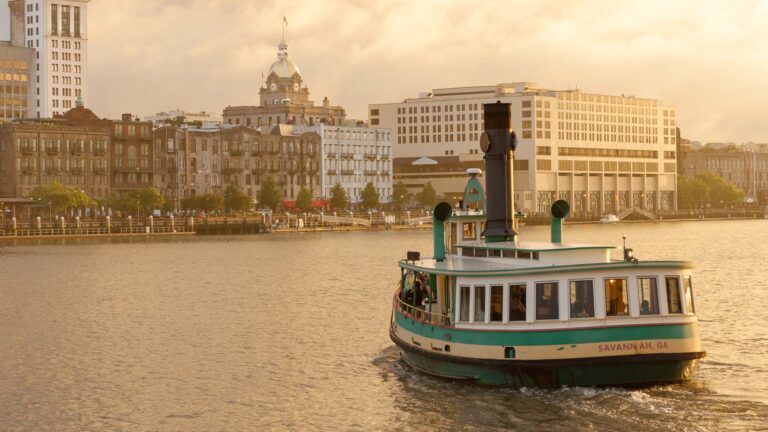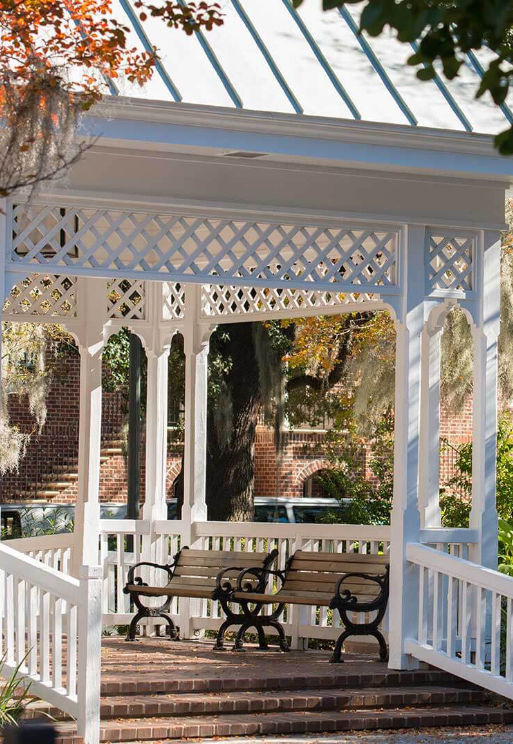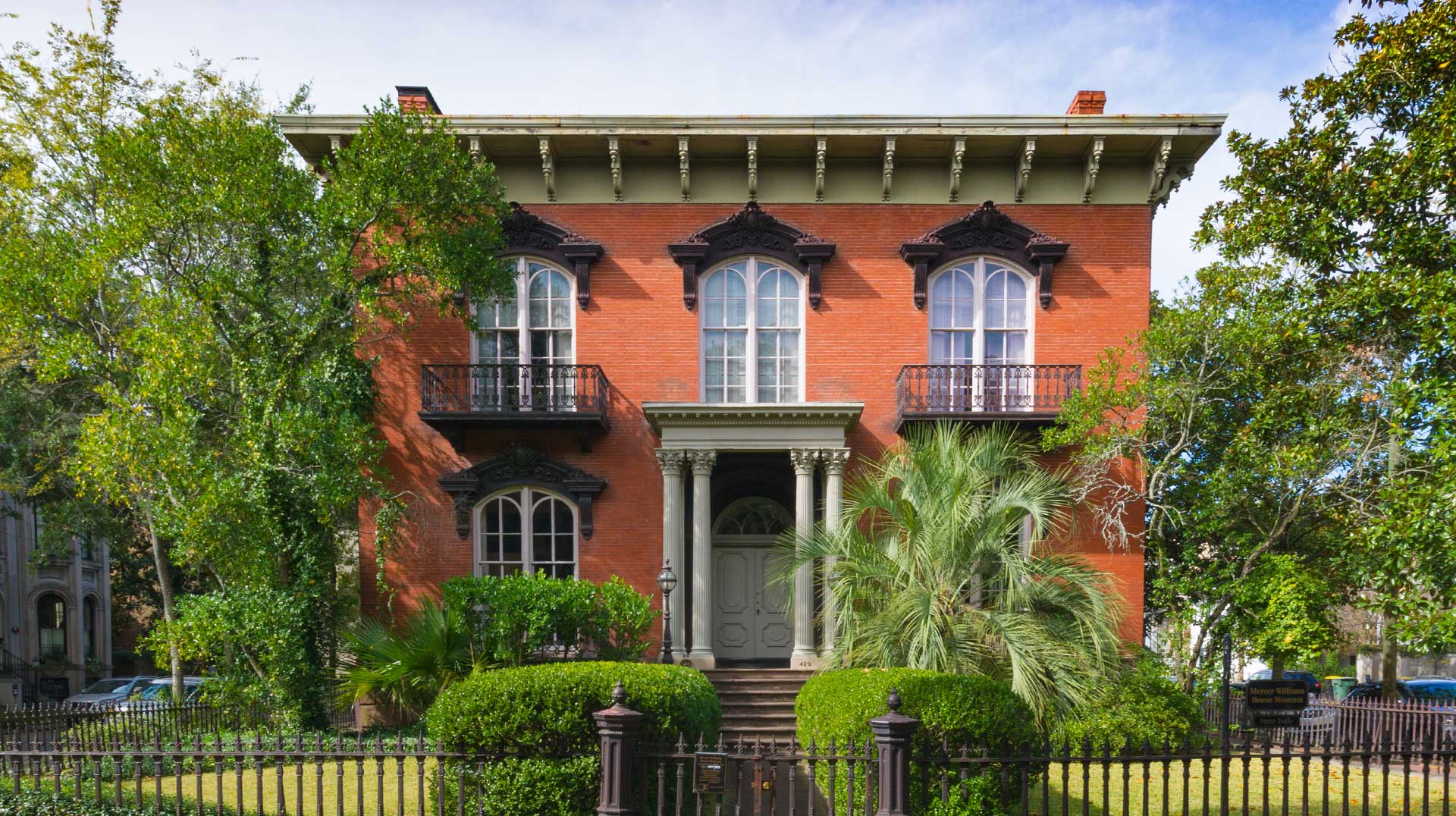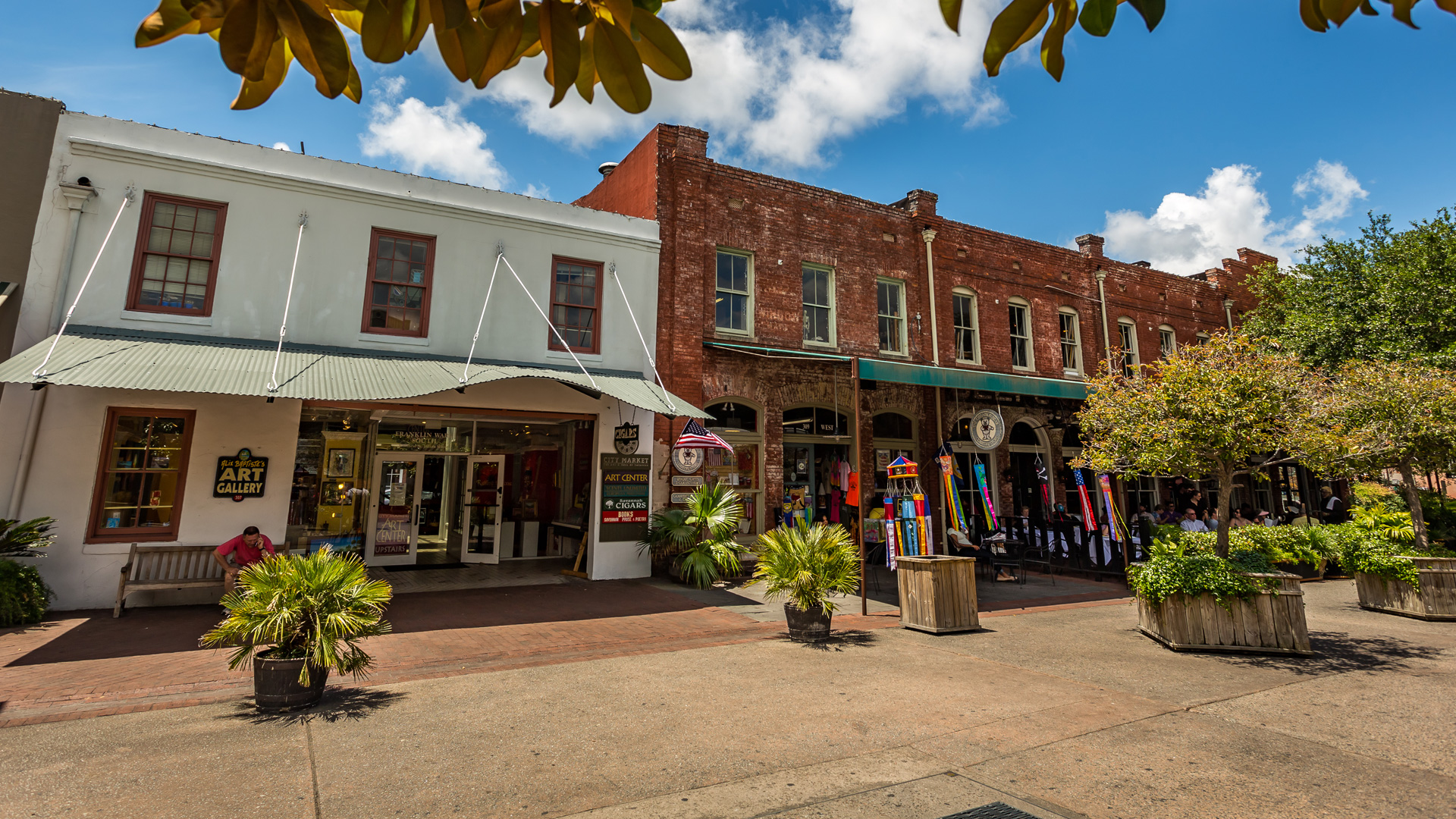The Civil War left a deep mark on the historical facts about Savannah, Georgia. In 1864, Union General William T. Sherman ended his famous March to the Sea by capturing the city. Instead of destroying it, he sent a message to President Abraham Lincoln offering Savannah as a “Christmas gift.” This act spared Savannah from the widespread fires and damage that many other southern cities suffered. Today, visitors can still see Civil War landmarks when visiting Savannah, GA, including Fort Pulaski National Monument and the Green-Meldrim House, where General Sherman stayed during the occupation. These places provide powerful insight into how the war shaped Savannah’s identity and helped preserve its historical charm.

Historical Facts About Savannah
What Makes Visiting Savannah, GA, So Unique?
When you’re visiting Savannah, GA, you’ll see right away that the city feels special. Founded in 1733, it’s the oldest city in Georgia and still looks much like it did long ago. Cobblestone streets, big shady oaks, and open squares make it feel calm and welcoming. People here take pride in keeping that old charm alive. Every street and building connects to a story about how the city grew.
Walking through Savannah is like turning the pages of a history book that never ends. You can visit old churches, houses, and parks that have been part of the community for centuries. The museums and landmarks help tell those same stories in new ways. This guide shares some of the most interesting historical facts about Savannah, Georgia, and shows why visiting Savannah, GA, gives you such a strong sense of the past.
What Are the Most Important Historical Facts About Savannah, Georgia?
The historical facts about Savannah, Georgia, explain how this small riverside town became one of the most visited cities in the South. So much of that history still stands around you when you’re visiting Savannah, GA. From its careful city plan to its old churches and restored homes, the city’s history is part of daily life.
The City’s Founding
Savannah started in 1733 when General James Oglethorpe and 120 settlers arrived on the bluff above the Savannah River. The city was designed around a grid of open squares that gave people space to meet and gather. That same design still shapes how Savannah looks today. Life in those early years followed strict rules. Alcohol, slavery, and lawyers were banned, and Catholics weren’t allowed at first because of political conflicts with nearby Spanish Florida. Even with those limits, Savannah grew quickly and became Georgia’s first capital in 1777. These early years remain some of the most important historical facts about Savannah, Georgia, and set the foundation for the city that visitors see now.
The Civil War Era
Many historical facts about Savannah, Georgia, come from the Civil War. In December 1864, Union General William T. Sherman reached the city after his March to the Sea. He decided not to destroy it and sent a message to President Abraham Lincoln, offering Savannah as a Christmas gift. Because of that choice, much of the city’s architecture and beauty survived.
Fort Pulaski, located near the coast, played an important role during the war. Union General David Hunter signed an early order there to free enslaved people in Georgia, South Carolina, and Florida, though it was later reversed. Today, people visiting Savannah, GA, can tour Fort Pulaski National Monument to see the well-preserved fort and learn more about what happened there.
Landmark Structures and Early Communities
Savannah’s oldest buildings show how the city has changed over time. The Herb House, built in 1753, is part of The Pirate’s House restaurant and is believed to be the city’s oldest structure. The Wormsloe Historic Site features the remains of Noble Jones’ 1745 home and a beautiful driveway lined with centuries-old oaks. The First African Baptist Church, founded in 1773, is one of the oldest Black congregations in the country and still has pews built by enslaved craftsmen. The Congregation Mickve Israel, founded that same year, continues to serve the community and keeps two of the oldest Torah scrolls in North America.
When you’re visiting Savannah, GA, these landmarks are part of what makes the city so memorable. The old buildings, churches, and squares aren’t just for show. They tell real stories about the people who built this city and kept its history alive.
What Are the Best Prohibition and Party Facts About Savannah?
Savannah has always had a lively spirit, and that’s clear in the way the city handled the Prohibition era. Some of the most fascinating historical facts about Savannah, Georgia, come from this period, when the country banned alcohol but locals still found clever ways to celebrate.
The American Prohibition Museum®, located in the heart of City Market, tells this story in an interactive way that brings the Roaring Twenties back to life. It’s the only museum in the United States fully dedicated to the history of Prohibition. Inside, you’ll find exhibits filled with real artifacts, newspaper clippings, and lifelike wax figures that share what life was like during that time. Visitors exploring Savannah, GA, can walk through recreated speakeasies, meet costumed docents, and even enjoy a handcrafted cocktail next door at the museum’s 1920s-style bar, the Congress Street Up speakeasy.
Another piece of living history is found at the Crystal Beer Parlor, one of the city’s oldest restaurants. Originally a family grocery store in the early 1900s, it became one of the first places in America to legally serve alcohol again after the repeal of Prohibition. It’s now a favorite spot for locals and travelers visiting Savannah, GA, known for its welcoming staff, framed historic photos, and traditional southern comfort food.
Savannah’s social atmosphere still reflects that legacy today. The historic district allows open containers as long as drinks are served in clear plastic cups. You’ll often see people carrying a cocktail while walking along River Street or City Market, adding to the city’s relaxed and friendly feel. It’s one of those historical facts about Savannah, Georgia, that blends the past with the present in the best way. The spirit of celebration never really left. It just found new places to thrive.
What Unique and Cultural Facts Make Savannah Stand Out?
Many historical facts about Savannah, Georgia, highlight how the city continues to inspire creativity and community. Its charm reaches far beyond its cobblestone streets, showing up in film, music, and even national organizations that began right here.
One of the most well-known connections is to Forrest Gump, one of the most famous movies ever filmed in the South. The park bench where Tom Hanks’ character told his story was originally placed in Chippewa Square, right in the historic district. While the bench itself was a prop, you can see a replica today at the Savannah History Museum, where visitors exploring Savannah, GA, stop to take photos and relive one of cinema’s most iconic moments.
Savannah also gave the world the Girl Scouts of the USA, founded by Juliette Gordon Low in 1912. Her birthplace, located on Oglethorpe Avenue, welcomes visitors from across the globe who want to learn about her life and the founding of the organization. Guided tours share stories about her family, the early days of the movement, and the home’s restoration.
The city’s natural scenery also tells its own story. The Spanish moss hanging from trees across town isn’t moss at all. It’s a type of bromeliad plant related to the pineapple. The soft gray-green strands you see swaying in the trees thrive in Savannah’s humid climate and have become one of its most photographed features.
Among the most famous landmarks in the city is the Forsyth Park Fountain, one of Savannah’s most recognizable symbols. Installed in 1858, it was ordered directly from the Janes, Beebe & Co. catalog and shipped to the city in pieces before being assembled in the park. It remains a popular gathering place and photo stop for anyone visiting Savannah, GA. The fountain’s graceful design and wide pathways around it make it a centerpiece for events, festivals, and weddings. Each visit adds another layer to the city’s long and beautiful story.
What Are the Spookiest Historical Facts About Savannah, Georgia?
When people think about historical facts about Savannah, Georgia, they often picture old mansions, cobblestone streets, and trees draped with Spanish moss. But Savannah’s history also includes a darker side that has earned it a reputation as one of America’s most haunted cities. Centuries of stories, tragedy, and preserved landmarks have given the city an eerie charm that draws both paranormal investigators and curious visitors.
One of the most haunted places in town is Colonial Park Cemetery, where more than 9,000 people are buried. It’s one of the oldest cemeteries in the region and remains a stop on many tours for anyone visiting Savannah, GA. Guests on the Ghosts & Gravestones® Frightseeing® Tour often pass by its gates after dark while guides share ghost stories and chilling local legends. Many visitors have claimed to see strange lights, hear faint whispers, or feel a sudden chill in the air as they walk near the cemetery’s entrance.
Other sites, such as the Andrew Low House and The Old Sorrel Weed House, are also known for unexplained sounds and reported ghost sightings. Both locations have appeared on television shows and continue to fascinate guests who want to experience Savannah’s haunted history firsthand.
One of the city’s most unusual mysteries can be found off the coast of Tybee Island. In 1958, a Mark 15 thermonuclear bomb was accidentally dropped during a training mission and was never recovered. Often called the “Tybee Bomb,” it remains hidden somewhere beneath the water in Wassaw Sound. This strange piece of history adds another layer of mystery to the list of historical facts about Savannah, Georgia.
Why Do These Historical Facts About Savannah, Georgia, Still Matter Today?
Every corner of Savannah tells a story that continues to shape the city’s identity. The architecture, traditions, and long-preserved landmarks show how the past remains alive in everyday life. These historical facts about Savannah, Georgia reveal how deeply the city values its roots and the people who built it.
From the early settlers who mapped out its famous squares to the guides who share its haunted tales, Savannah has always celebrated storytelling. Visitors who are visiting Savannah, GA, can experience that history for themselves by joining Old Town Trolley Tours®, touring the American Prohibition Museum, or exploring one of the city’s historic homes. Each experience connects travelers to a different part of Savannah’s story.
For those who love a bit of mystery, the Ghosts & Gravestones Frightseeing Tour offers a deeper look into the city’s ghostly legends. For others, the museums, parks, and architecture reveal how art, culture, and resilience have kept Savannah thriving through the centuries. These historical facts about Savannah, Georgia, remind us that the city isn’t frozen in time. It continues to grow while honoring the stories that made it unforgettable.
FAQS
Anyone interested in early American history will find that visiting Savannah, GA, offers an incredible opportunity to see rare artifacts and preserved landmarks. The Mickve Israel synagogue houses the two oldest Torah scrolls in North America, making it one of the most important sites for Jewish heritage in the country. Another of the historical facts about Savannah, Georgia, is that the Herb House, built in 1753, remains the city’s oldest standing building. It’s now part of The Pirate’s House restaurant, where guests can see a piece of Savannah’s early colonial life while enjoying a meal. Together, these locations bring the city’s earliest stories to life and show just how much history still thrives here.
Yes, the Savannah historic district is one of the largest National Historic Landmark Districts in the United States. This area spans more than 20 city squares and showcases some of the best-preserved architecture in the country. Exploring the district is one of the most rewarding rainy day activities in Savannah, but it’s also an essential part of visiting Savannah, GA, in any season. Guests can hop aboard Old Town Trolley Tours to learn about these historical facts about Savannah, Georgia, through live narration by friendly and knowledgeable guides. The combination of history, beauty, and storytelling makes it clear why the district continues to be one of the most visited areas in the South.
Many movie fans already know that visiting Savannah, GA, means stepping into the world of Forrest Gump. Some of the most memorable scenes from the film were shot near Chippewa Square, located in the heart of the historic district. The bench where Tom Hanks’ character sat while telling his life story was originally placed there for filming, though the prop now rests in the Savannah History Museum. Fans can still visit the square and take photos where the movie was filmed, adding one more location to the long list of historical facts about Savannah, Georgia, that connect pop culture to local history.
One of the most inspiring historical facts about Savannah, Georgia, is that it’s the birthplace of the Girl Scouts of the USA. The organization was founded in 1912 by Juliette Gordon Low, a Savannah native whose dedication to service and education shaped generations of young women. Her childhood home, located in the historic district, is open to the public and serves as both a museum and gathering place. Visitors exploring Savannah, GA, can take guided tours that highlight her story and the early years of the Girl Scouts movement. This cultural legacy continues to define Savannah as a city that celebrates community, leadership, and the people who’ve made it extraordinary.


